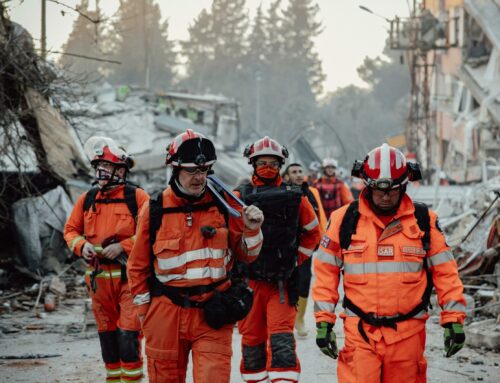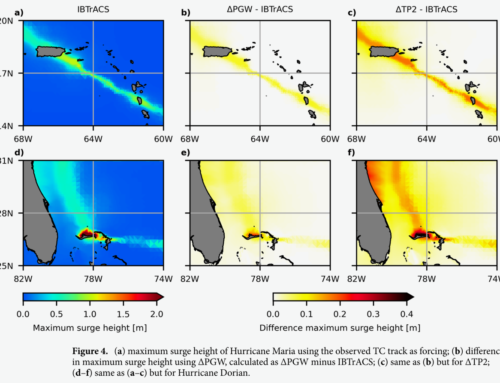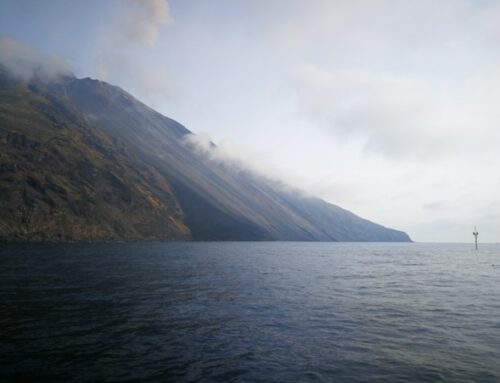Figure 1: Map of the Caribbean indicating the Dutch Caribbean islands of Bonaire, Sint Eustatius and Saba (the BES islands).
Iris Keizer, Royal Netherlands Meteorological Institute (KNMI)
in collaboration with KNMI colleagues, the PARATUS project and the CAS Foundation
In 2023, the global average temperature increased almost 1.5°C compared to the pre-industrial period (1850-1900), marking it as the hottest year on record [1]. Climate change exacerbates the risk posed by many hazards while, at the same time, the effects of climate change reduce the resilience of societies. [2,3]. As the Earth continues to warm, the Caribbean is increasingly vulnerable to hydro-meteorological hazards such as tropical storms, hurricanes, excessive rainfall, floods, droughts, heat waves, landslides, ecological damage, and coastal erosion.
KNMI’23 Climate Scenarios for the BES Islands
The Royal Netherlands Meteorological Institute (KNMI) provides climate analyses and climate scenarios for the Dutch Caribbean islands of Bonaire, Sint Eustatius and Saba (the BES islands). Also, KNMI advises the Dutch government on climate change and issues warnings to Dutch society about hazardous weather conditions and their impacts. In October 2023, climate scenarios for the BES islands and the Netherlands were presented, offering guidance to policy advisers and other professionals to make informed decisions in the face of a changing climate [4].
Bonaire is a coral reef island located in the southern Caribbean, off the coast of Venezuela (see figure 1). The island and its coral reefs are under a major threat from rising sea levels due to its low elevation. Sint Eustatius and Saba are volcanic islands located in the northeast of the Caribbean archipelago, 800 km away from Bonaire. Although rising sea levels do not affect Sint Eustatius and Saba due to their high elevation, they are vulnerable to tropical hurricanes that can pass through their region.
Observational time series show that climate change has caused sea levels, air temperature, and sea surface temperature to rise in the Caribbean [2,5,6]. In addition to the increase in the frequency and intensity of heat waves, some studies suggest a drying trend in the region [2,6]. However, there are significant variations in rainfall observations between years and decades, making it difficult to identify a long-term trend in precipitation [5]. Since 1981, 35 hurricanes with wind speeds exceeding 18 m/s have come within 250km of Sint Eustatius and Saba [5]. The three most intense were Irma (2017), Maria (2017) and Lenny (1999). Although the islands were not directly hit by a hurricane, Hurricane Irma caused severe damage. The likelihood of hurricanes near Bonaire is much lower, with only 14 hurricanes coming within 250 km of Bonaire since 1981 [5].
According to the KNMI’23 climate scenarios, the BES islands will experience rising temperatures (see figure 2) and rising sea levels (see figure 3), as well as a drying trend (see figure 2), increased wind speed, and intensified rainfall during tropical storms and hurricanes [4]. Category 5 hurricanes are expected to occur more frequently on Sint Eustatius and Saba [4]. The extent of these changes depends heavily on the global emissions scenario. However, also for the low emissions scenario the projected changes will continue to increase the risk of hazards in the Caribbean [2,3,6]. Limiting global emissions can significantly reduce warming, drying, the rise of sea levels, and hurricane intensification [4].
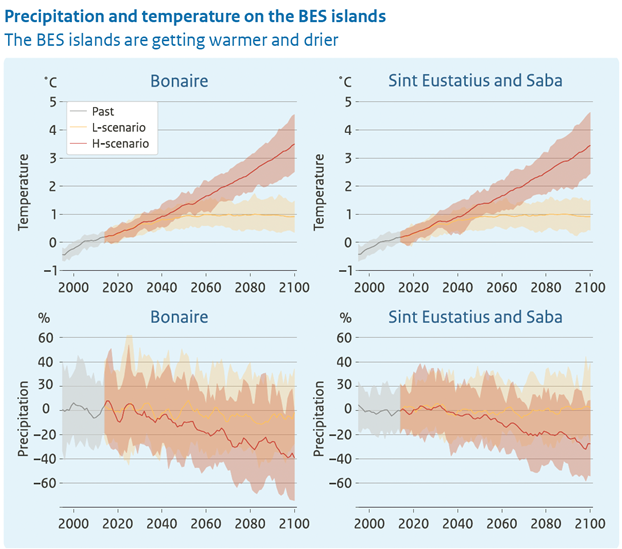
Figure 2: Projected changes (relative to 1991-2014) in the annual mean temperature and precipitation.
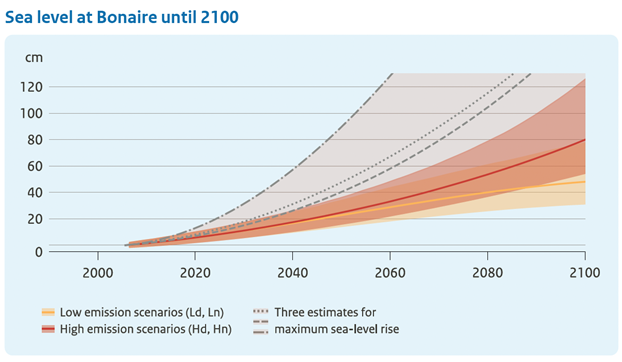
Figure 3: Sea level scenarios for Bonaire around 2100 relative to current levels (median and 90% band), including three estimates for the maximum sea-level rise (dashed lines in the light pink band).
Co-developing scenarios with stakeholders
The KNMI’23 climate scenarios translate the insights and research results from the most recent IPCC report [6] to the local situation for the Dutch Caribbean for climate variables that are considered useful for a large group of users. [4] The scenarios were calculated using the latest climate models and developed to provide stakeholders with an idea of how the climate of the BES islands will change between now and the end of this century.
The KNMI’23 climate scenarios were developed based on input from stakeholders, policymakers, and experts. They were published in a user report [4] and scientific report [7], accompanied by several websites containing additional information [8,9]. The scenarios have been discussed in meetings with stakeholders, end users, and communities. Stakeholders and users include those with an interest in policy-making, impact and risk assessment and disaster management. These meetings were also held to assess additional stakeholder requirements to sustain our efforts in creating user-customised scenarios, ensuring their relevance to a wide range of stakeholders. Some of these meetings were organised in collaboration with climate impact experts from the Climate Adaptation Services Foundation (CAS) and social experts from the research program Islanders at the Helm [10].
Climate Impact Atlas
The KNMI’23 climate scenarios have been incorporated into the Climate Impact Atlas for the BES islands, which was recently published by the CAS Foundation [11]. The Climate Impact Atlas presents current and projected climate effects, bringing together essential information about the impact of climate change on the BES islands in a clear and accessible manner. It includes climate statistics, a map viewer, and climate stories. The presented climate statistics provide information on climate change based on the KNMI’23 climate scenarios in an interactive and user-friendly format. This collaboration with the CAS Foundation allows us to tailor our scenarios to meet the specific needs of our users.
The PARATUS project
The KNMI has developed the 2023 climate scenarios as part of the Caribbean case study of the PARATUS project [12]. The ongoing efforts to refine the scenarios, tailored through stakeholder and user engagement, also align seamlessly with the goals of the PARATUS project to offer support in risk reduction associated with complex and compounding disasters by studying how future scenarios could change impacts. It is crucial to include climate change scenarios in the Caribbean case study as climate change intensifies natural hazards and related risks in the Caribbean. Additionally, collaborating with stakeholders, users, and policymakers in developing the scenarios aligns with the overarching goals of the PARATUS project to help policymakers and first and second responders in their disaster management practices.
See the blog post published on KNMI!
Reference
- https://climate.copernicus.eu/copernicus-2023-hottest-year-record
- Van Meerbeeck, C. J. (2020). Climate Trends and Projections for the OECS Region. OECS Climate Change Adaptation Strategy & Action Plan-Technical Report. Organisation of Eastern Caribbean States Commission.IPCC (2022): Small Islands. In: Climate Change 2022: Impacts, Adaptation and Vulnerability https://www.ipcc.ch/report/ar6/wg2/downloads/report/IPCC_AR6_WGII_Chapter15.pdf
- KNMI’23 climate scenarios: https://cdn.knmi.nl/system/ckeditor/attachment_files/data/000/000/308/original/KNMI23_climate_scenarios_user_report.pdf
- KNMI’21 climate signal: https://cdn.knmi.nl/knmi/asc/klimaatsignaal21/KNMI_Klimaatsignaal21.pdf
- IPCC (2021). The physical science basis. https://www.ipcc.ch/report/ar6/wg1/
- KNMI’23 scientific report: https://cdn.knmi.nl/system/ckeditor/attachment_files/data/000/000/320/original/KNMI23_climate_scenarios_scientific_report_WR23-02.pdf
- KNMI’23 climate scenarios toolkit: https://www.knmi.nl/klimaatscenarios23-toolkit
- KNMI’23 climate scenarios information for end users: https://www.knmi.nl/kennis-en-datacentrum/achtergrond/knmi-23-klimaatscenario-s-voor-gebruikers/
- https://www.naturetoday.com/intl/en/nature-reports/message/?msg=31402
- CAS Foundation Climate Impact Atlas: https://bes.climateimpactatlas.com/en/
- The PARATUS project: https://www.paratus-project.eu/




